Table of Contents
- 1 Understanding Survival Gardening
- 2 Setting Up Your Survival Garden
- 3 Essential Crops for Survival Gardening
- 4 Maximizing Garden Yields
- 5 Pest Control and Common Mistakes
- 6 Harvesting and Preserving Food
- 7 How Survival Gardening Goes Beyond Traditional Gardening
- 8 The Role of Community and Monastic Gardens in Survival Gardening
- 9 Preparing for Extreme Weather
- 10 Closing Thoughts on Survival Gardening
- 11 Survival Gardening FAQs
Views: 1
In the realm of survival, the role of gardening and farming stands as a stark contrast between scarcity and sustenance. While urban settings often rely on supermarkets for sustenance, understanding how to cultivate your food can be the key to self-sufficiency in times of crisis.
Gardening and farming not only provide a source of fresh produce but also foster essential skills that are invaluable when traditional supply chains falter. By learning to nurture plants and raise livestock, individuals can fortify their resilience against unforeseen challenges, ensuring a more secure future.
Understanding Survival Gardening
Basics and Benefits of Survival Gardening
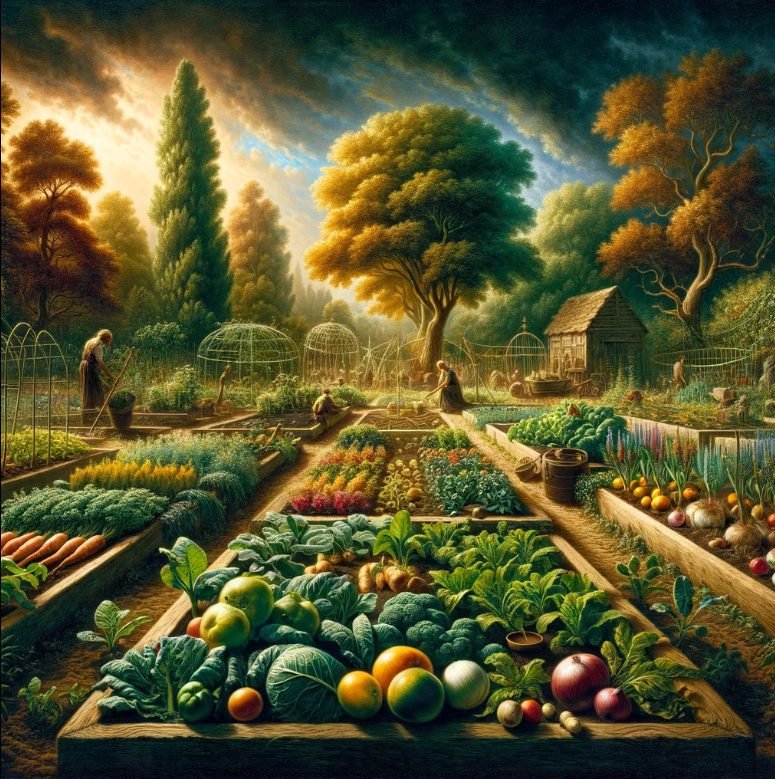
Survival gardening involves cultivating plants for sustenance in challenging conditions. Growing your own food ensures a fresh and reliable food source. It also promotes self-sufficiency, reducing dependency on external sources. However, it comes with challenges like unpredictable weather patterns and limited space.
One of the key benefits of survival gardening is the assurance of food availability, especially for emergency preparedness during or after a crises. By cultivating your own crops, you can ensure a steady supply of fresh produce without relying on supermarkets or other suppliers. It allows you to control the quality of your food by avoiding harmful chemicals often found in store-bought produce.
Despite its advantages, survival gardening presents challenges such as limited yields, vulnerability to pests, and the need for continuous maintenance. Relying solely on a survival garden requires careful planning and dedication to overcome these obstacles effectively.
Historical Resilience of Survival Gardening
Throughout history, communities have relied on gardening and farming for their survival. The ability to grow crops has been essential for civilizations to thrive amidst adversity. For example, during World War II, victory gardens played a crucial role in supplementing food supplies during rationing periods.
Communities like the Amish have showcased remarkable resilience through their traditional farming methods that prioritize sustainability over mass production. Their practices emphasize crop rotation, natural fertilizers, and manual labor techniques that ensure long-term viability without depleting resources.
Understanding historical examples highlights how agricultural practices have sustained populations through wars, famines, and natural disasters. Learning from these experiences underscores the importance of preserving traditional farming knowledge for future generations’ resilience.
Adapting Your Survival Garden to Different Climates
When planning a survival garden in diverse climates, selecting appropriate crop varieties is crucial for success. Opt for resilient plants that can withstand varying temperature ranges and soil conditions specific to each region’s climate patterns.
To extend your growing season indoors,consider planting tomatoes and herbs in containers near sunny windows or under grow lights. This technique not only prolongs harvest times but also enhances overall food security by diversifying cultivation methods beyond outdoor spaces.
Beans are an excellent choice for a survival garden due to their versatility, ease of cultivation, and rich nutrient content essential for human health. They provide protein,fiber,and various vitamins,minerals criticalfor maintaining well-beingduring challenging circumstances.
Setting Up Your Survival Garden
DIY Survival Gardening Basics
Starting a DIY survival garden involves mastering essential techniques for planting and cultivating crops. Begin by understanding the key components needed for a successful garden setup. These include soil, sunlight, water, and proper ventilation.
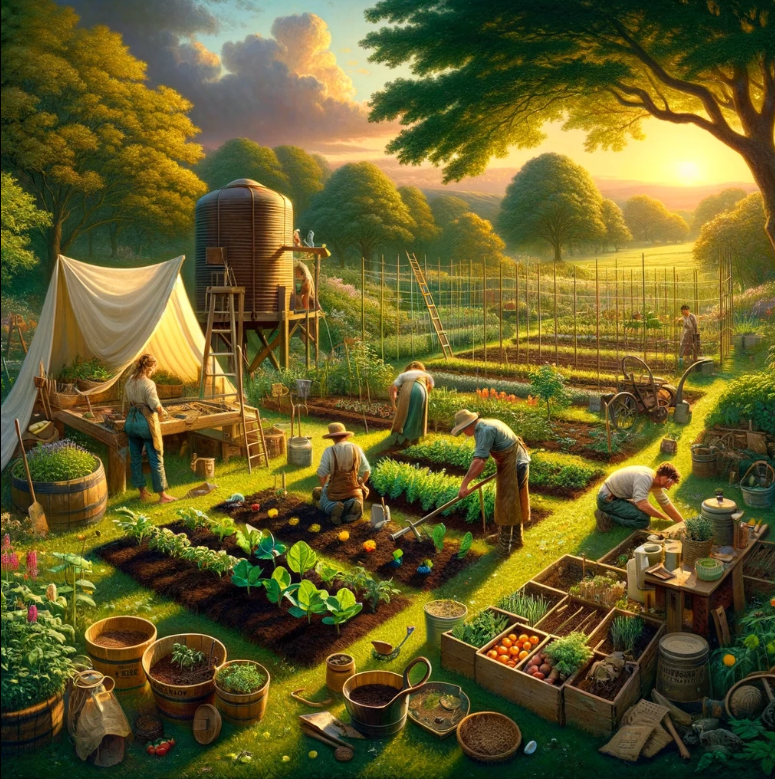
To ensure your survival garden thrives, focus on preparing the soil adequately. This involves removing weeds, breaking up clumps of dirt, and adding compost or fertilizer to enrich the soil. Selecting the right location is crucial – choose an area with ample sunlight and good drainage.
When setting up your prepper garden, remember that attention to detail in each step can significantly impact your harvest’s success. By following these tips for preparing the soil and choosing an ideal location, you are laying a strong foundation for a thriving survival garden.
Selecting Seeds for Survival Gardening
Choosing the appropriate seeds is vital for your survival garden’s long-term sustainability. Consider factors such as climate and soil conditions when selecting seeds to ensure they thrive in your specific environment. Research which crops are best suited to your region’s weather patterns.
Heirloom seeds play a significant role in seed selection due to their ability to produce plants with consistent traits year after year. Understanding the importance of heirloom seeds ensures that you can save seeds from each harvest for future planting seasons.
Seed saving is a practice that not only promotes self-sufficiency but also contributes to environmental conservation by preserving plant biodiversity. By learning how to save seeds from your crops, you are taking a proactive step towards sustainable gardening practices.
The Art of Companion Planting in Survival Gardening
Incorporating companion planting into your survival garden strategy offers numerous benefits for plant health and yield optimization. Explore various plant combinations that work synergistically together – some plants naturally deter pests while others attract beneficial insects.
Companion planting enhances space utilization within your garden by maximizing growth potential through strategic plant placements. By understanding which plants complement each other well, you can create a harmonious ecosystem that supports overall crop health and productivity.
Essential Crops for Survival Gardening
Nutrient-Dense Vegetables
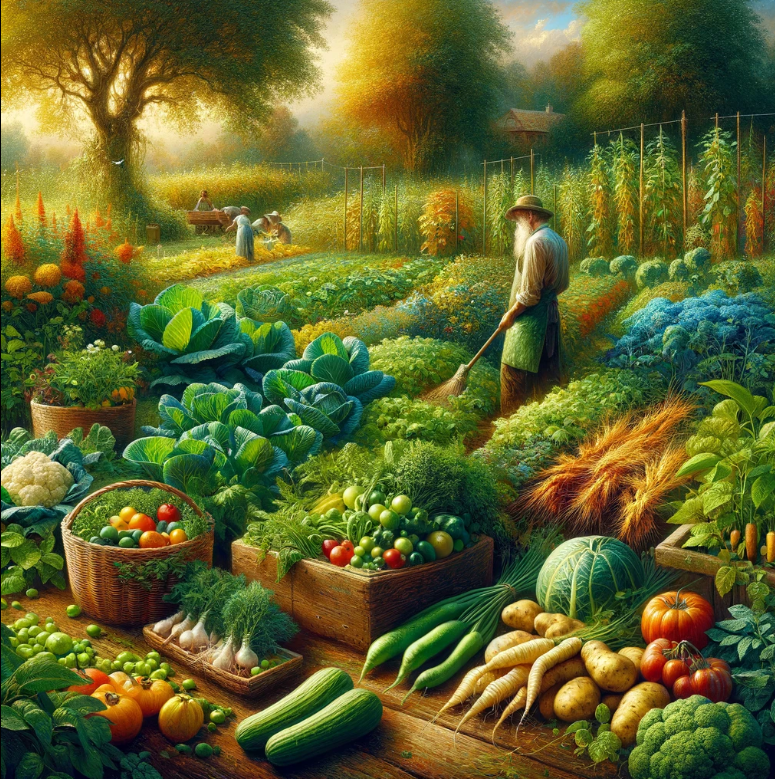
In a survival scenario, nutrient-dense vegetables play a crucial role in providing essential vitamins and minerals needed for overall health. Leafy greens like spinach and kale are rich in iron and calcium, vital for maintaining energy levels and bone strength. Root vegetables such as carrots and beets are packed with essential nutrients, including vitamin A and folate, supporting immune function.
Growing nutrient-dense vegetables requires attention to detail. Carrots, for instance, thrive in well-drained soil with full sun exposure. Spinach prefers cooler temperatures, making it ideal for early spring or late summer planting. Harvesting these vegetables at the peak of freshness ensures maximum nutritional value.
Ensuring a balanced diet during survival situations is critical for long-term health. Incorporating a variety of nutrient-dense vegetables not only provides essential vitamins but also helps maintain optimal bodily functions. By growing these crops in your garden, you can sustain yourself with fresh produce rich in vital nutrients.
High-Calorie Crops to Include in a Survival Garden
When planning for survival, including high-calorie crops like potatoes and squash is essential to meet energy needs. Potatoes are versatile tubers that offer a significant calorie boost while being easy to cultivate in various soil types. Squash varieties such as butternut squash provide both calories and essential nutrients like vitamin C.
Cultivating high-calorie crops involves understanding their growth requirements. Potatoes require loose, well-drained soil to prevent rotting and promote healthy tuber development. Squash plants benefit from regular watering and ample sunlight to produce abundant fruits rich in calories.
Incorporating high-calorie crops into your survival garden plan ensures a sustainable source of energy-rich foods during challenging times. These crops not only provide necessary calories but also contribute valuable nutrients to support overall health when other food sources may be limited.
Maximizing Garden Yields
Space and Time Efficiency
To maximize yields, consider implementing space-saving techniques like vertical gardening and trellising. These methods help increase the yield per square foot, especially in small garden spaces. By utilizing vertical structures, you can grow more plants without taking up additional ground space.
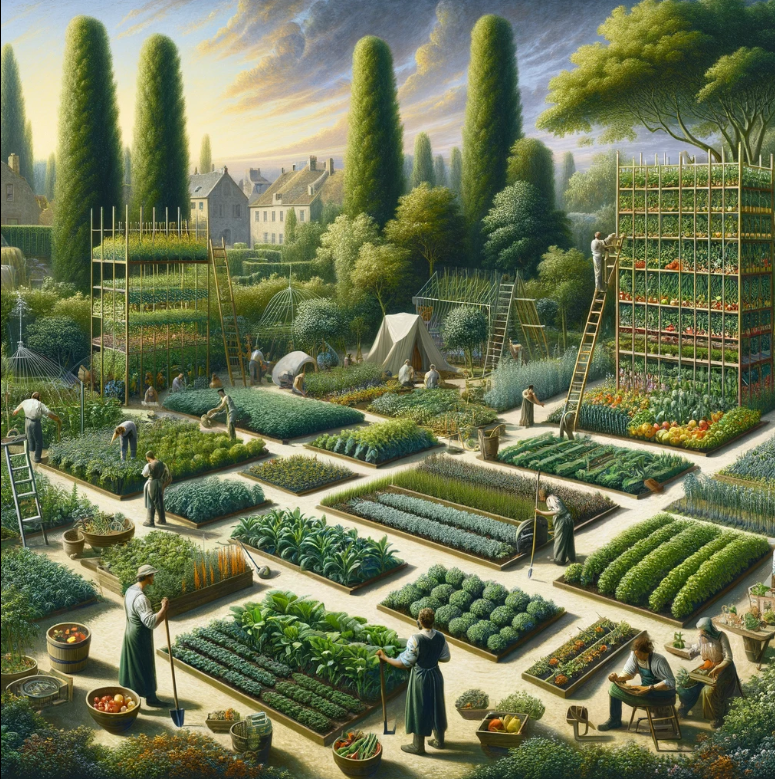
For optimal time efficiency, plan your garden carefully with crop rotations and succession planting strategies. This ensures that the soil remains healthy and productive while minimizing weed growth. Crop rotation also helps prevent nutrient depletion in the soil, leading to healthier plants with higher yields.
Intensive cultivation methods are crucial for making the most of limited gardening space. By densely planting crops together, you can reduce the space between plants, maximizing sunlight exposure and airflow. This approach not only boosts yields but also helps suppress weed growth by shading out unwanted plants.
Advanced Strategies for Survival Gardening
For those looking to take their survival gardening skills to the next level, consider exploring advanced techniques such as intercropping and polyculture systems. Intercropping involves planting different crops together in close proximity to maximize space utilization and enhance biodiversity in your garden.
Water storage solutions and conservation are key for sustainable gardening practices. Implement water-saving methods like drip irrigation systems that deliver water directly to plant roots, reducing wastage through evaporation or runoff. Rainwater harvesting is another eco-friendly approach that ensures a sustainable water supply for your garden.
Extend your growing season by experimenting with season extension techniques like hoop houses and cold frames. These structures provide protection from harsh weather conditions, allowing you to grow crops year-round even in colder climates.
Pest Control and Common Mistakes
Effective Solutions for Pest Control in Survival Gardening
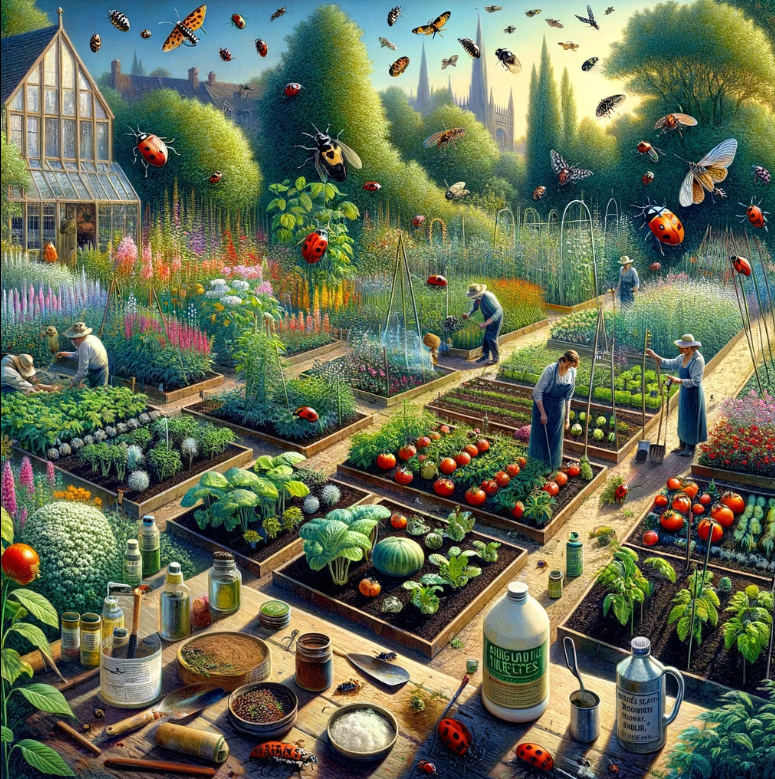
To tackle pest issues in gardening, consider using natural remedies like neem oil or introducing beneficial insects. These methods help maintain a healthy ecosystem, reducing the need for harmful chemicals. Crop rotation is also crucial to prevent pest buildup by disrupting their life cycles.
Implementing physical barriers such as row covers or netting can effectively protect plants from pests without resorting to chemical solutions. Practicing good garden hygiene by regularly removing debris and weeds can eliminate hiding spots for pests. Creating diverse planting areas helps confuse pests and reduces the likelihood of infestations.
Introducing predator species like ladybugs or lacewings can serve as a natural pest control method, preying on common garden nuisances such as aphids. Another effective solution involves companion planting, where certain plant combinations repel pests naturally. For instance, marigolds deter nematodes when planted alongside vegetables.
Learning from Mistakes in Survival Gardening
One common mistake in pest control is overusing chemical pesticides, which can harm beneficial insects and disrupt the garden’s ecological balance. Instead of relying solely on pesticides, it’s essential to adopt integrated pest management (IPM) strategies that prioritize sustainable practices over quick fixes. By understanding the lifecycle of pests and their natural predators, gardeners can make informed decisions on pest control measures.
Neglecting early detection of pest infestations often leads to severe damage to crops before intervention occurs. Regularly inspecting plants for signs of disease or insect damage enables prompt action to prevent widespread issues. Ignoring proper spacing between plants can create ideal conditions for pests to thrive due to limited airflow and increased humidity levels around foliage.
Another critical mistake is disregarding the importance of soil health in preventing pest problems. Poor soil quality weakens plants’ immune systems, making them more susceptible to attacks by various pests and diseases. Conducting soil tests periodically and amending soil with organic matter helps maintain optimal nutrient levels for plant growth while deterring potential threats.
Harvesting and Preserving Food
Techniques for Preservation
Preserving food is crucial for food security. One effective technique is canning, where food is sealed in jars after being heated to kill bacteria. Another method is dehydration, which involves removing moisture from food to prevent spoilage.
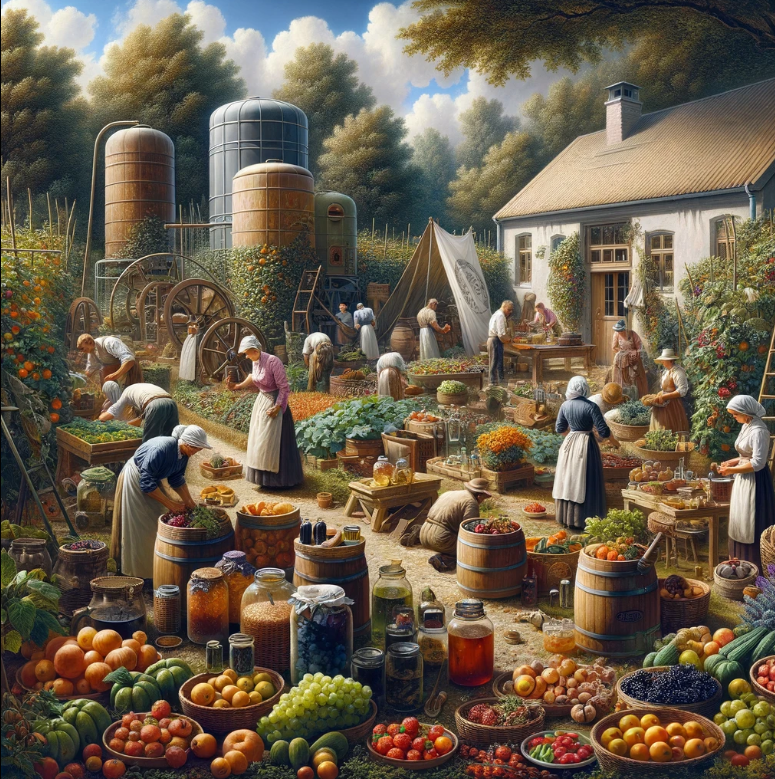
Freezing is a popular preservation technique that helps preserve the freshness of produce. By freezing fruits and vegetables at their peak ripeness, you can enjoy them throughout the year. Fermentation is another ancient preservation method that not only extends the shelf life of food but also enhances its flavor.
Pickling is a simple yet effective way to preserve vegetables like cucumbers and carrots. The process involves submerging vegetables in a brine solution made of vinegar, salt, and spices. This method not only prolongs the shelf life of produce but also adds a tangy flavor to it.
Storing Foods Safely
Proper storage plays a vital role in maintaining the quality and safety of produce. Store fruits and vegetables separately as they emit different gases that can cause each other to spoil faster. Keep perishable items like berries refrigerated to prevent mold growth.
Utilize root cellars or cool basements for storing root vegetables like potatoes and carrots as they require cool, dark environments with high humidity levels. For pantry staples like grains and legumes, store them in airtight containers away from heat sources to maintain their freshness.
Rotate your stock regularly by using older items first before moving on to newer ones. This practice ensures that no food goes bad due to long-term food storage. Label all containers with the date of storage to keep track of their freshness accurately.
How Survival Gardening Goes Beyond Traditional Gardening
Indoor Food Growing
Indoor food growing is a convenient way to ensure a fresh supply of produce year-round. Utilizing containers and grow lights, even those in urban areas can cultivate herbs, vegetables, and fruits indoors. This method allows for control over environmental factors like temperature and light exposure.
One of the advantages of indoor food growing is the ability to extend the growing season beyond traditional outdoor methods. By providing consistent warmth and light, plants can thrive regardless of external weather conditions. Indoor gardening reduces the risk of pests and weeds, leading to healthier crops.
Utilizing hydroponic or aquaponic systems further enhances indoor food growing by eliminating the need for soil altogether. These methods provide plants with nutrients directly through water solutions, resulting in faster growth rates and increased yields. Moreover, incorporating automated systems for watering and lighting simplifies maintenance tasks.
Permaculture Principles in Survival Gardening
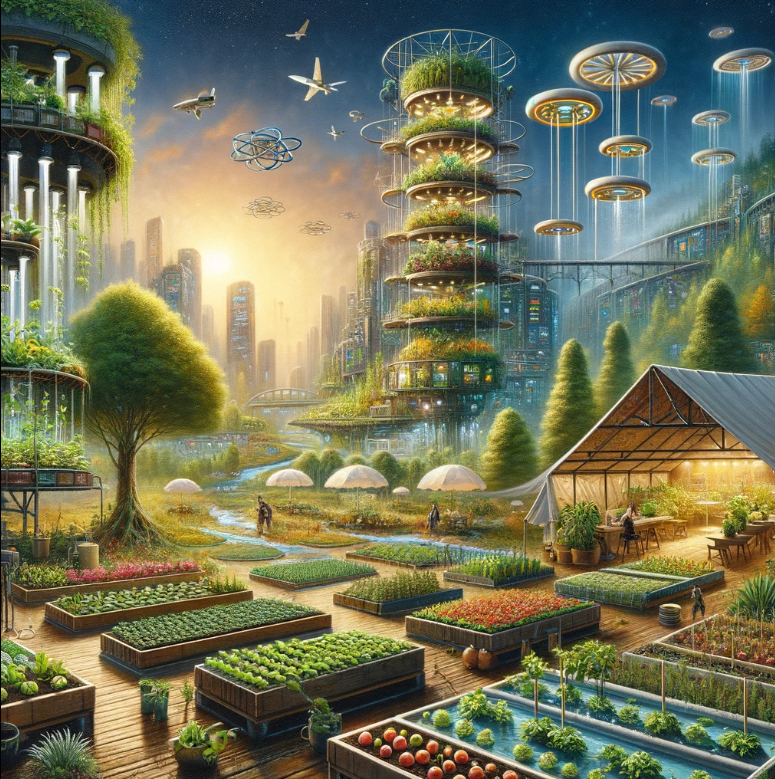
Permaculture principles focus on creating sustainable agricultural ecosystems that mimic natural patterns found in forests and other ecosystems. By following these principles such as observing and interacting with nature, utilizing renewable resources efficiently becomes possible. Implementing permaculture techniques promotes biodiversity while reducing reliance on external inputs.
In permaculture design, every element within a system serves multiple functions to maximize efficiency and productivity. For example, planting certain crops together can create symbiotic relationships where each plant benefits from the presence of others. This practice not only conserves space but also enhances soil fertility naturally.
Another key aspect of permaculture is minimizing waste by recycling organic matter back into the ecosystem through composting or mulching. This approach enriches soil health while reducing the need for synthetic fertilizers or pesticides. Embracing permaculture principles leads to resilient farming systems that are self-sustaining in the long run.
The Role of Community and Monastic Gardens in Survival Gardening
Role in Survival Gardening
Community and monastic gardens have played a crucial role throughout history, especially during times of crisis. These gardens not only provide fresh produce but also promote community bonding. The act of growing food together fosters cooperation among people, ensuring everyone has enough to eat.
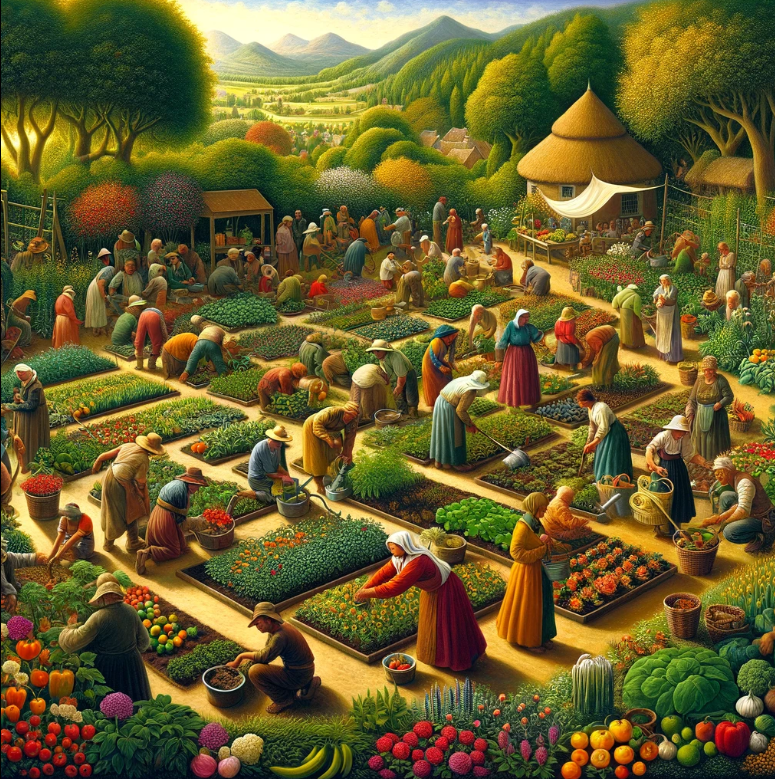
In times of war or famine, these gardens served as essential sources of sustenance for entire communities. The vegetables and fruits grown within the confines of these gardens were vital for survival when resources were scarce. The surplus produce could be preserved through drying or pickling methods for consumption during harsh winters.
The concept of community gardens for survival extends beyond providing food; it also enhances mental well-being by offering a peaceful retreat from daily stresses. Engaging in gardening activities can reduce anxiety levels and promote relaxation, contributing to an overall sense of wellness within the community.
Future of Feeding Cities
As urban populations continue to grow rapidly, the future of feeding cities lies in sustainable agricultural practices like urban farming. Utilizing rooftops, vacant lots, and vertical spaces allows cities to produce fresh produce locally, reducing reliance on long-distance transportation that contributes to environmental pollution.
Urban farming initiatives not only address food security issues but also create green spaces within concrete jungles. By transforming unused areas into vibrant gardens or farms, cities can improve air quality and biodiversity while providing residents with access to nutritious fruits and vegetables right at their doorstep.
Moreover, urban agriculture promotes education about where food comes from and encourages healthier eating habits among city dwellers. By actively participating in the cultivation process through community garden projects or farmers’ markets, individuals develop a deeper appreciation for the effort that goes into producing the food they consume daily.
Preparing for Extreme Weather
Planting Strategies
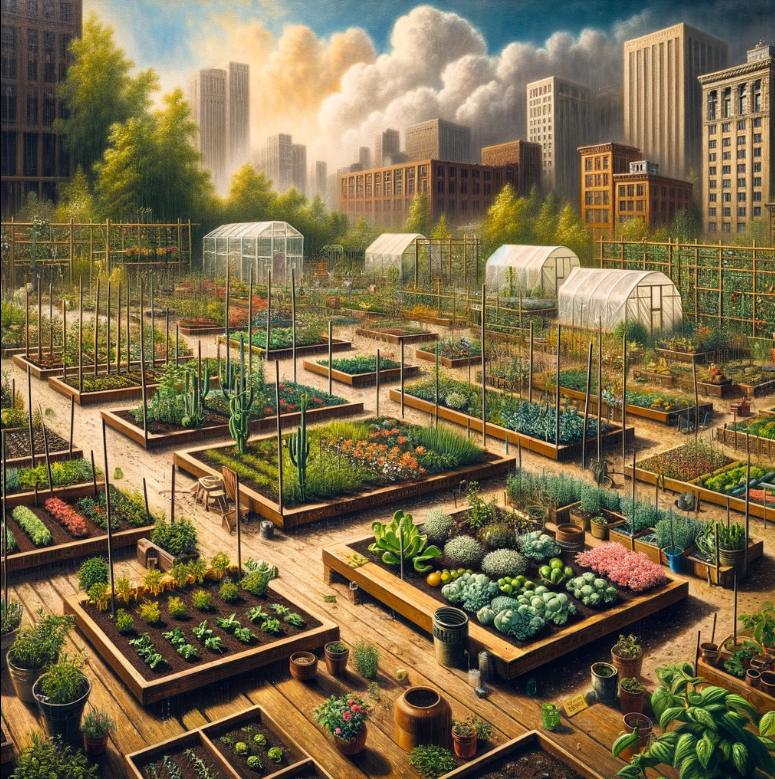
Diversification is key. Plant a variety of crops to ensure that at least some will survive harsh conditions. Consider planting drought-resistant plants like succulents and cacti that require minimal water. Rotating crops can help maintain soil health and reduce the risk of pests and diseases.
To further enhance your garden’s resilience, utilize techniques such as companion planting. This involves growing different plants together to benefit each other, such as planting marigolds near tomatoes to deter pests. Implementing raised beds can also improve drainage and prevent waterlogging during heavy rains or floods.
Consider creating a vertical garden using trellises or hanging baskets to maximize space and protect plants from ground-level frost. Utilize cold frames or row covers to shield delicate plants from frost damage in colder seasons. Lastly, investing in a greenhouse can provide a controlled environment for year-round cultivation.
Adapting to Unpredictable Patterns
In adapting to unpredictable weather patterns, stay informed about local climate trends and adjust your gardening practices accordingly. Be prepared for sudden temperature fluctuations by having measures in place such as shade cloth for excessive sun exposure or row covers for unexpected frosts.
Implement efficient watering techniques like drip irrigation systems or soaker hoses to conserve water during dry spells while ensuring optimal hydration for your plants. Collect rainwater in barrels during wet seasons to use during drier periods, reducing reliance on external water sources.
Embrace the concept of permaculture, which focuses on sustainable agricultural practices that mimic natural ecosystems. By creating self-sustaining food systems within your garden, you can adapt more effectively to changing environmental conditions without compromising long-term productivity.
Closing Thoughts on Survival Gardening
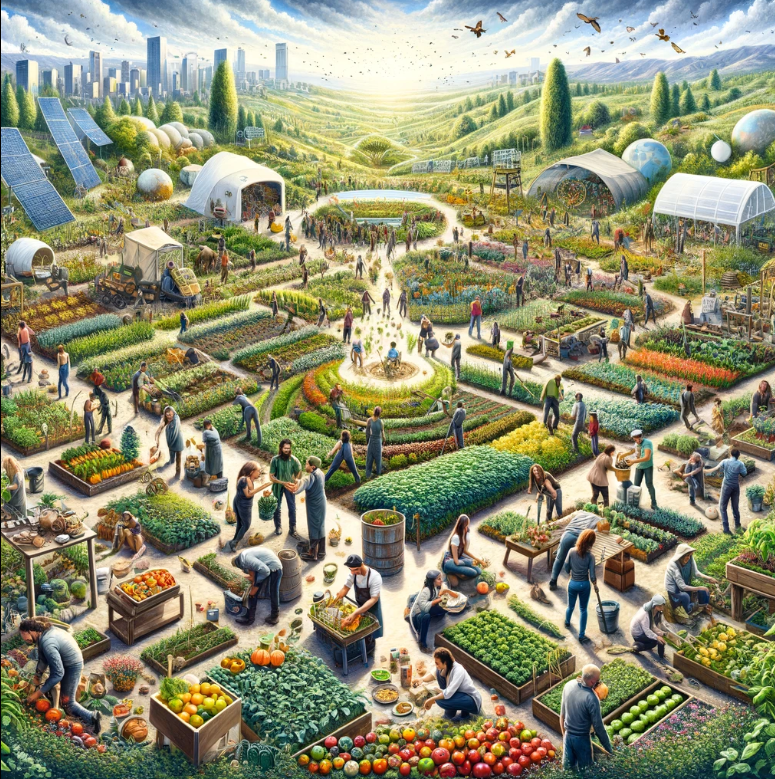
Incorporating survival gardening into your prepping strategy is crucial. By understanding what to plant, how to maximize yields, and overcome challenges like pests, you’re taking proactive steps towards self-sufficiency. Harvesting and preserving your own food ensures a reliable source of nutrition in times of need. Looking beyond traditional gardening methods and fostering community gardens can further enhance your resilience against unforeseen circumstances.
As you delve into the realm of survival gardening, remember that preparation is key. Start small, learn as you go, and adapt to your environment. Embrace the knowledge shared in this guide and take action today to secure a more sustainable future for you and your community.
Survival Gardening FAQs
What is survival gardening and farming?
Survival gardening and farming involve cultivating food crops with the primary goal of ensuring self-sufficiency during challenging times. It focuses on growing essential crops, maximizing yields, and preserving food for sustenance in emergencies.
How can I start survival gardening as a prepper?
To set up a survival garden as a prepper, choose a suitable location with ample sunlight, prepare the soil by enriching it with compost, select resilient crop varieties, implement water-saving techniques like drip irrigation, and consider vertical gardening to maximize space efficiency.
Which are the essential crops for survival gardening?
Key crops for survival gardening include potatoes (high calorie yield), beans (protein source), corn (versatile grain), tomatoes (nutrient-rich), squash (long storage life), and herbs for flavoring. Diversifying your crop selection ensures a balanced diet during times of need.
What are effective pest control methods for survival gardens?
Implement natural pest deterrents like companion planting, using insect-repelling herbs, deploying physical barriers such as row covers or netting, practicing crop rotation to disrupt pest cycles, and maintaining good garden hygiene by removing debris that could harbor pests.
Why is community involvement important in survival gardening?
Engaging with the community fosters knowledge sharing, resource pooling for collective resilience efforts, mutual support during crises, skill exchange among members with varying expertise levels in agriculture or food preservation techniques.




Pingback: Best Doomsday Prepper Supplies to Have
Thank you for your sharing. I am worried that I lack creative ideas. It is your article that makes me full of hope. Thank you. But, I have a question, can you help me?
Possible. What is the question?